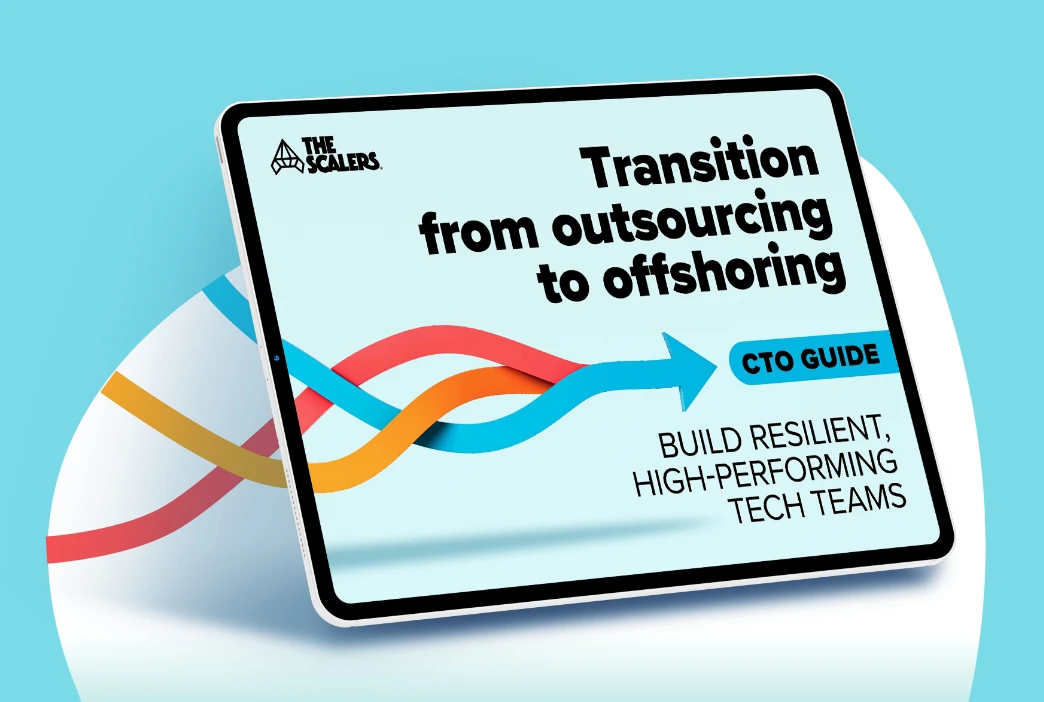A Global Workplace Analytics survey showed that at least 50% of the global workforce works in some sort of telecommuting role. Further, 80-90% of the respondents said that they would like to work remotely, at least for a few days in the week.
On the other hand, with the competition for finding the right workforce at an all-time high, more and more companies are now looking at building remote teams in different countries. Without the restrictions of hiring only from the local talent pool, companies can leverage foreign talent, and significantly reduce operational costs at the same time. In this case, remote doesn’t mean working from home, but working in dedicated offices across continents and time zones.

Check out five practical ideas to help you build a strong spirit in your remote teams
DOWNLOAD INFOGRAPHICHowever, there are still companies in the West who are skeptical about working with a global team. And that’s primarily because they don’t know how to manage a remote team and make it work.
Will it hamper productivity? What if the project fails? Is it efficient to build a remote team? These are some of the many questions that prevent them from building an offshore team. This blog post is the answer to all those questions. In this piece, we highlight five tips, which, when implemented, will ensure maximum collaboration and productivity with your remote team.
1. Be intentional
Your local team is the team that you see everyday. You either pass them by in the halls, eat lunch with them, or hang out together at the local restaurant after office. They’re the people that are always around you and can easily reach out to you when they need to. On the other hand, if you build a remote team in a country like India — hundreds and thousands of miles away from you, that isn’t going to be possible. Your remote employees cannot stop by your desk or catch up with you over the weekend. And that’s where being intentional when managing a remote team can work wonders.
What does it mean to be intentional?
Simply put, this means taking extra efforts to make your remote team feel like they belong to your organization — that they’re not unlike your local team.

When an employee, remote or otherwise, feels appreciated or recognised, their productivity automatically increases. Simple things like responding to them as quickly as possible, creating virtual spaces for socialising, or always remembering and celebrating birthdays and work anniversaries may seem insignificant, but can be extremely gratifying. Make each team meeting as an intentional opportunity to engage with your remote team, and find new ways to contribute towards a healthy collaboration.
2. Create a communication strategy
Gone are the days when geographical distance affected how teams communicate with each other. Today, given the plethora of technological advancements in the world of communication, initiating contact and managing a remote team barely takes a few seconds.
Studies have suggested that between 60-90% of all communication can be nonverbal — basically, it’s easier to get on the wrong page when working with remote teams who aren’t physically present to understand the tone of your voice. This makes it all the more important to build a robust communication strategy. Here are some practices that you can implement:
- Make it a point to engage with your remote team at least once a day. It doesn’t always have to be work-related.
- Use multiple channels to communicate. Instant messaging channels like Slack work wonderfully for quick messages and updates. On the other hand, video-conferencing tools like Skype can be used for presentations, brainstorming sessions, and review meetings. The key is to choose your channels wisely.
- Schedule weekly, or bi-monthly calls with your team. Take this time to discuss the workflows, any blockers, and the highlights of the project so far. This constant interaction and engagement will not only help you manage your remote team better, but will also help remote workers feel included and heard.

Can’t find the skills you need at home? Stop searching and start scaling
LEARN MORE3. Use cloud-based project management tools
If remote employees cannot find an important document, struggle to download files because there’s no system in place, or forget when an important task is due, you’ve failed to address the basics — implementing task-tracking and project management tools.
Since you can’t physically see what your remote team is working on, a cloud-based project management system is an absolute necessity. By using a cloud project management system, you can plan, collaborate, and monitor the different stages of a particular project using a network of tools.
Task management Kanban boards, a customisable dashboard, fully-integrated file storage, and a variety of task-tracking tools are some of the features of a traditional cloud project-management system that you can leverage to manage your remote team. Some famous project management systems include Wrike, Trello, Basecamp, Zoho Projects, and Clarizen.
Another major advantage of having a project management system in place is that you no longer have to worry about organising work. You don’t need sticky notes or leather-bound planners — everything will always be backed up on the cloud for easy access. Every week, during the weekly review meeting, all you have to do is review the tasks and progress of your remote team, and you’re good to go. It really is that simple!

4. Practice transparency
When working with remote employees, it’s easy to keep them away from the big picture. Sitting in a different country, they may not always know what’s happening at the local office and vice versa. However, employees often look to their managers and leaders as an example of how to behave in a work setting. If you are open and honest, there is no reason why they aren’t going to do the same.
By practicing transparency at every stage and implementing it as a part of your team culture, you not only gain the trust of your remote employees but also ensure that they aren’t hesitant to come to you with any questions or concerns. This practice also goes a long way in retaining your remote employees in the long-term.
For example, if you have news to share, make sure you let every team member know at the same time — not just the members of your local team. This way, your remote team won’t feel like they’re the last to hear about what’s happening in the office, or that you’re intentionally withholding information from them.
5. Visit your remote team
You can’t expect your remote teams to feel connected to your company if you can’t make that happen through action.

Visiting your remote office, even if it’s just once a year, can build real cohesion within your team. During your visit, you can conduct short one-on-one meetings to review each individual’s goals and analyse their performance. You can even organise a work vacation, where your local and remote teams together visit a new city or country. This time can be used as an opportunity for the teams to connect on a personal level. Team-building activities, socials, brainstorming, board-games — whatever works best for your team!

How we helped Preqin establish a 450+ person global R&D centre in India
DOWNLOAD CASE STUDYAnd if you need more help, you can always read some books about managing remote teams. They are a perfect way to learn how to lead teams — irrespective of where you’re located.
If you want to know how you can build an engaged and productive remote team in India, feel free to reach out to us by filling out the contact form. One of our senior executives will get back to you shortly.
















